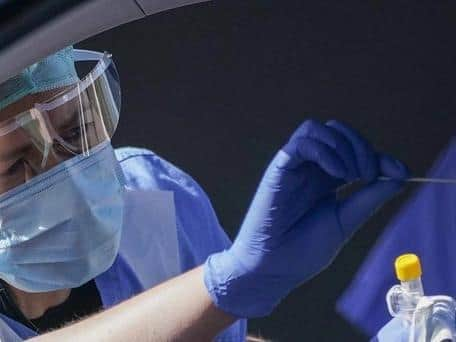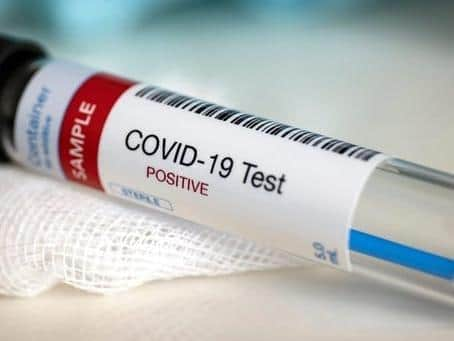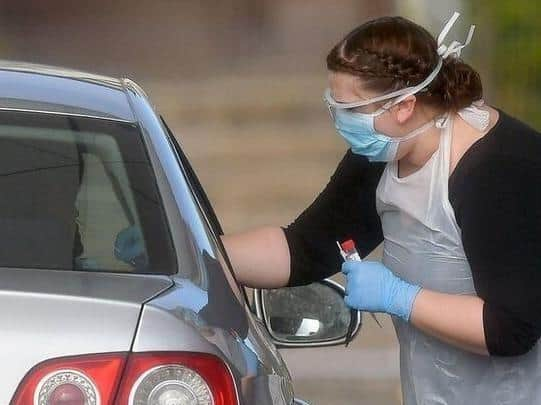Key findings revealed as UK's largest coronavirus testing study is published
and live on Freeview channel 276
The research, which examined levels of infection in the general population in England, has been published by Imperial College London and will undergo peer review before a final report is published.
The report provides an insight into who was infected with the virus between 1 May and 1 June over lockdown, comparing geography, age, sex, ethnicity, key worker status and symptoms.
Advertisement
Hide AdAdvertisement
Hide AdThe report's findings will be used to help provide local authorities with a clearer picture of the spread of the virus to help inform measures tailored to limit its spread and save lives.


What did they find out?
- The research shows the rates of infection fell during May, the last month of lockdown, halving every 8 to 9 days.
- There were on average 13 positive cases for every 10,000 people, with an overall reproduction number of 0.57 – lower than previously reported.
- These findings show the virus was circulating with relatively low prevalence and was declining in May, ahead of the decision being made to begin to lift lockdown restrictions.
Advertisement
Hide AdAdvertisement
Hide Ad

- Young adults, aged 18 to 24, were more likely to test positive than other age groups, reinforcing the need for this age group to adhere to social distancing measures to protect vulnerable friends and family
- Those of Asian ethnicity were more likely to test positive than those of white ethnicity. It is possible that higher infection rates have contributed towards the higher death rates observed in this ethnic group.
- Care home staff and healthcare workers were more likely to be infected with COVID-19 during lockdown than the general population, at a time when the public was following government advice to stay at home, therefore limiting their exposure to the virus. Those who had patient facing roles were more likely to be in contact with known cases as part of their work.
- The report also shows anyone who had recent contact with a known COVID-19 case was 24 times more likely to test positive than those with no such contacts.
Advertisement
Hide AdAdvertisement
Hide Ad

- The NHS Test and Trace service is playing an integral role in stopping the virus from spreading further having already contacted 130,000 people at risk of unwittingly transmitting the virus and advising them to self-isolate.
What have the Government said about the findings?
Health Secretary Matt Hancock has welcomed the initial findings from Imperial College London, particularly the suggestion that there was a significant reduction of the virus before lockdown restrictions were eased.
He said the findings appear to vindicate the Government's decision to ease lockdown restrictions when it did.
He said: "This ambitious testing programme will help us better understand the spread of the virus to date, predict how it may spread in the future and inform our response to the pandemic.
Advertisement
Hide AdAdvertisement
Hide Ad"It shows the impact our national lockdown efforts have had and demonstrates that we have taken the right actions at the right time.
"As a country we have made great strides towards beating this virus but we mustn’t take our foot off the pedal, and such studies will be vital as we continue to fight this virus."
Who is behind the report?
It was commissioned by the Department of Health and Social Care and carried out by a 'world-class' team of scientists, clinicians and researchers at Imperial College London, Imperial College Healthcare NHS Trust and Ipsos MORI.
Professor Paul Elliott, FMedSci, director of the programme at Imperial College London, said: "Community testing is a vital step in ongoing efforts to mitigate the pandemic, but to be successful this must be based on robust scientific evidence and sound statistics.
Advertisement
Hide AdAdvertisement
Hide Ad"Through this surveillance programme with DHSC and Ipsos MORI we’re gathering the critical knowledge base necessary to underpin community testing and facilitate a greater understanding of the prevalence of Covid-19 in every corner of England."
Kelly Beaver, managing director of Public Affairs at Ipsos MORI added: "As a partnership between DHSC, Imperial College London, and Ipsos MORI it has taken significant innovation, perseverance and skill to ensure it has been a success, with lessons learned feeding into future phases of this study and shared with the wider academic community through a transparent publication process.
"We want to thank all the study participants for their time, and contribution, it has been fantastic to be engaging with the public at this scale on an issue of such national importance."
The study has also been upscaled and repeated for the month of June, with a report expected within weeks.
Advertisement
Hide AdAdvertisement
Hide AdIn the second part of the programme (REACT-2), a number of different antibody tests have been assessed for their accuracy and ease of use at home.
These tests look for evidence that someone has been infected in the past. Plans are underway to roll this out to 100,000 people to identify the levels of antibodies against the virus that causes Covid-19 in the general public.
Comment Guidelines
National World encourages reader discussion on our stories. User feedback, insights and back-and-forth exchanges add a rich layer of context to reporting. Please review our Community Guidelines before commenting.